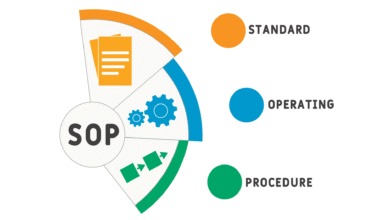8 Google Tips for AI Search Success

▼ Summary
– Google released new guidance on succeeding in AI-powered search, emphasizing higher-quality clicks and engagement from AI Overviews.
– Website owners can control AI Overviews visibility using tools like `nosnippet` and `max-snippet` and should optimize for multimodal content (images, videos, updated profiles).
– Studies show AI Overviews reduce organic traffic and engagement, contradicting Google’s claims of higher-quality clicks.
– Google advises adapting to evolving search trends, but critics argue AI Overviews trap users in Google’s ecosystem, harming the web’s business model.
– The guidance largely repeats old advice (e.g., unique content, good page experience) without addressing declining CTRs and traffic losses.
Google’s latest AI search guidance emphasizes quality content and user experience while acknowledging industry concerns about declining organic traffic. The tech giant recently outlined strategies for success in its AI-powered search landscape, though many recommendations echo long-standing SEO best practices with an added focus on multimodal content.
Key updates reveal that AI-driven searches generate higher engagement, according to Google’s internal data. The company confirmed existing meta tags like `nosnippet` and `max-snippet` still control content visibility in AI Overviews. More notably, they’re pushing creators to enhance content with rich media – high-quality images, videos, and optimized business listings through Merchant Center and Google Business Profiles.
Eight core principles emerged from Google’s guidance:
- Prioritize unique, people-first content
- Optimize page experience
- Ensure content accessibility
- Control preview appearances
- Align structured data with visible content
- Embrace multimodal formats
- Analyze visit quality beyond clicks
- Adapt to evolving user behaviors
John Mueller of Google Search Central noted that clicks from AI Overviews demonstrate higher engagement metrics, suggesting users arrive better informed and more likely to convert. However, third-party research contradicts these claims, showing declining engagement from AI-generated results compared to traditional organic traffic.
The evolution toward AI-powered search brings fundamental changes. Where classic “ten blue links” once dominated, modern results incorporate visual elements, voice queries, and now AI-generated summaries. While Google frames this as responding to user needs, the rapid implementation has left many publishers scrambling to adapt.
Industry data paints a concerning picture: despite Google’s claims of increased satisfaction, multiple studies show declining click-through rates across both organic and paid results. Some analysts suggest AI Overviews keep users within Google’s ecosystem rather than driving traffic to external sites, raising questions about the long-term viability of current web publishing models.
While the guidance reinforces timeless SEO principles, the real challenge lies in navigating an environment where AI-generated answers potentially reduce website visits. Content creators must balance traditional optimization with new strategies that account for how AI interprets and surfaces information – all while monitoring whether these “higher quality” clicks actually translate to business results.
(Source: Search Engine Land)

